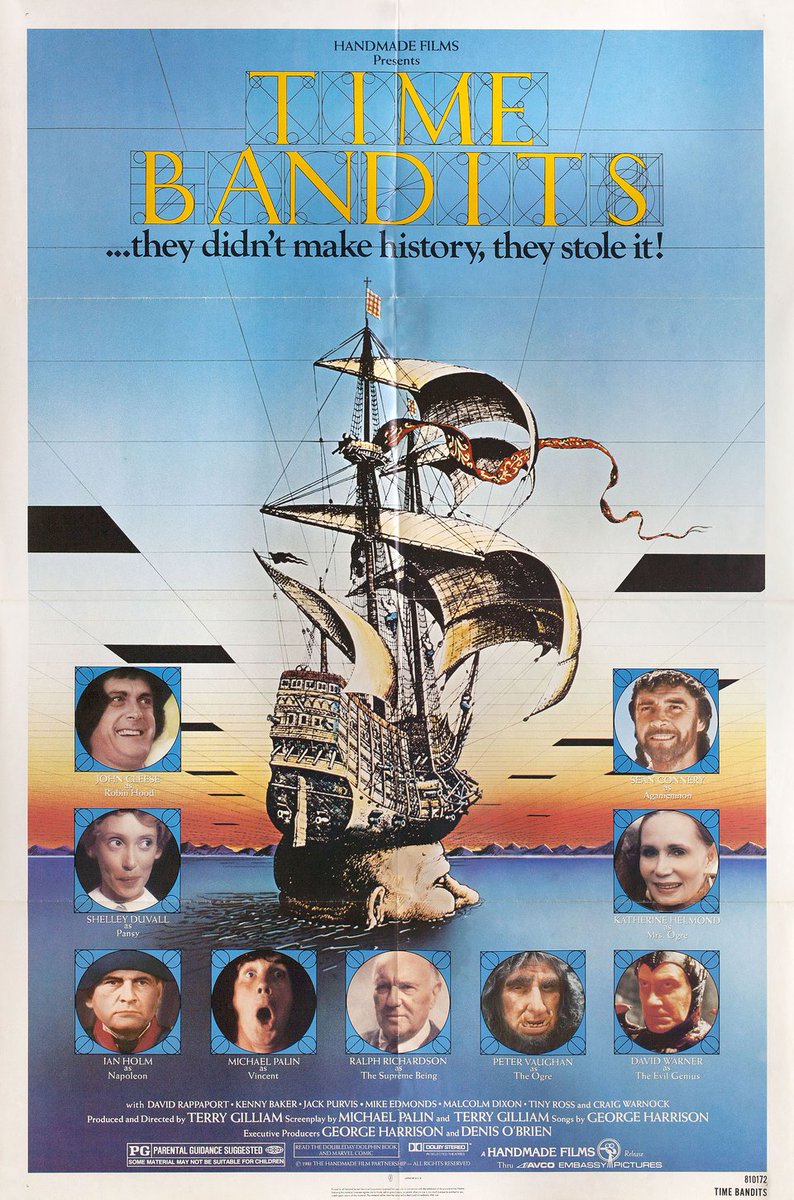"A dream to some. A nightmare to others!" As it's Christmas let's look back at a film that I think helped redefine an old genre, captivated the imagination and launched many successful acting careers.
Let's look at John Boorman's Excalibur!
Let's look at John Boorman's Excalibur!

For a long time the film industry found the King Arthur story amusing. Camelot (1967) was a musical comedy; Monty Python and the Holy Grail (1975) was pure comedy. 



But director John Boorman had been thinking seriously about the Arthurian legend since 1969, particularly Sir Thomas Malory's 1469 telling of the story 'Le Morte d’Arthur'. The mythic theme greatly appealed to him. 

Boorman had also read A Glastonbury Romance by John Cowper Powys, and later visited Glastonbury to get a sense of the place. The idea of a cinematic version of King Arthur's tale began to be fleshed out in his mind. 

After his 1972 film Deliverance, Boorman's career had taken some interesting turns. He and Rospo Pallenberg had worked on a Lord Of The Rings adaption that proved too expensive to film; his sci-fi epic Zardoz left audiences baffled; Exorcist II was a mess of a movie. 



But filming Zardoz near his home in Wicklow fired Boorman's imagination: the Irish countryside, the mythical storyline, the simple cinematic effects - something special could be fashioned from all this, with King Arthur's legend as its theme. 

Outside of cinema there had been a resurgence of interest in mythic stories: the Conan revival of the 1960s; the growth of Dungeons and Dragons in the early 1970s; novels such as Mary Stewart's Merlin Trilogy. Film studios started to think seriously again about fantasy movies. 

Orion Pictures showed interest in Boorman's project, and both he and Rospo Pallenberg worked on condensing 'Le Morte d’Arthur' down to three hours. For such an expansive story this was a huge challenge, but Boorman was already clear about the kind of story he wanted to tell. 

"The film has to do with mythical truth" Boorman said in 1981, "not historical truth; it has to do with man taking over the world on his own terms for the first time... The characters are seeking to find their place in the world, their destiny." 

The project - now called Excalibur - took some liberties with the medieval Arthurian tale: Uther Pendragon first wields Excalibur and drives it in to the stone; Perceval returns it to the water. After some 'straightening' the story would come in at 140 minutes running time. 

Excalibur was filmed in Ireland and deliberately featured a cast that would be unknown to US audiences. Nigel Terry would play Arthur with Cherie Lunghi as Guenevere. Both Liam Neeson and Gabriel Byrne would make their screen debuts alongside Patrick Stewart. 

But Arthur isn't the mythic centre of Excalibur; Merlin is. Played by Nicol Williamson, Merlin is "a mix of awesome power and foolishness" Boorman later said. "New forces are contending with his magic and each other. New passions... And these emotions are beyond him." 

Playing opposite Williamson was Helen Mirren as the enchantress Morgana Le Fay. Boorman knew that they had a spiky history between them, and hoped this would add sparks to their on-screen relationship. 

Boorman described Excalibur as a story of "the coming of Christian man and the disappearance of the old religions which are represented by Merlin." Merlin in the end becomes a dream, "the forces of superstition and magic are swallowed up into the unconscious." 

Filming was tough; heavy rain disrupted shooting, but helped add to the primeval sense of Arthur's kingdom. The use of coloured gels ensured that scenes shimmered, and that Excalibur had an etherial green glow about it. 

Excalibur makes use of many jump cuts to indicate the passage of time. As Uther plunges Excalibur into the stone in the dark, bleak woods the camera cuts immediately to the same shot in spring: eighteen years have passed. 

Bob Ringwood was in charge of costume design, with Terry England in charge of armour (he also designed the space armour for Aliens). Music was scored by Trevor Jones and the soundtrack contained the memorable O Fortuna from from Carl Orff's 1935 cantata Carmina Burana. 

Excalibur was released in 1981 to good reviews an strong box-office ratings. It was a dazzling but complex film, and like Kubrick's 2001 tried to convey a grand mythological idea in a linear narrative. Overall most felt it succeeded. 

Behind the Sword in the Stone is a 2013 documentary about the making of Excalibur. Do check it out if you'd like to understand more about this charismatic film and how it came about. 

"Our time is passing and the time of man is coming; the one God is driving out the many gods" Merlin tells Morgana. Excalibur is however timeless. It also opened the way for Time Bandits and Labrynth to find an appreciative audience.
But that's another story...

But that's another story...


• • •
Missing some Tweet in this thread? You can try to
force a refresh























